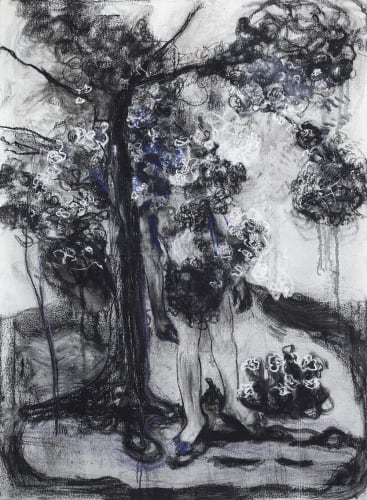It is with great pleasure that Mind Set Art Center launches “Gathering at the Beginning of Life” of Romanian artist Ioan De Moisa. This is the artist's solo debut at the gallery, featuring 30 latest paintings, which explore the relationship between man and nature.
Romanian artist Ioan De Moisa mainly paints human gatherings and landscapes. His landscape works display distinct geographical features with metaphors the internal moments of the human experience. They also serve as jumping-off point for his “self-exploration”. Moisa imbues his paintings with profound emotions. His gaze penetrates their superficial structure and finds the deeper essence. Through the act of painting, the artist looks to enter the spiritual realm and pose the ultimate questions of life, “Who are we? Where do we come from? Where are we going? Why are we what we are?”
Moisa often depicts winter landscape or seascape, in which lonely figures and group travelers sporadically make their appearances. He believes the vast land and sea give off an endlessly expansive energy as they engulf the earth and dwarf everything the eyes can see. In his 2024 painting “Farewell”, the withered trees in the cold carry a sentimental dialogue with the overcast sky. Captured at the center of the scene is the bleak sight of two people walking into the distance. According to Moisa, “Farewell” is an emotional landscape painting that depicts the typical harsh winter of Transylvania. He has also taken into consideration of the fact that Romania shares a border with war-torn Ukraine and through this painting, the artist honors all of those who have had to flee their homeland due to war. The small bit of bare land not covered by snow on the bottom right corner of the frame is a hint at the nature’s vitality and the undying hope of the human race.
Another one of Moisa’s work, “The Tree of Life”, is an even more accurate depiction of his firm believes that “life and death exist as a never-ending cycle.” The artist has painted a man leaning on a blossoming tree, his face almost completely obscured. The black and white charcoal and blue pastel marks convey a sense of serenity, an allegory for the tranquility and beauty of death. The painter isn’t trying to convey a sense of nihilism, but rather tells a story of death and rebirth with the blossoming tree. The demise of each individual makes way for the rebirth of another. In Romanian tradition, people burn withered plants at the end of winter to create fertile soil for new life. As spring arrives, the nature orchestrates the music of rebirth whereas winter vanishes under the fire of imminent death. Through the ceremony, we begin the comprehend the vital significance of death in the circle of life. And through death, we affirm the eternal essence of life.

